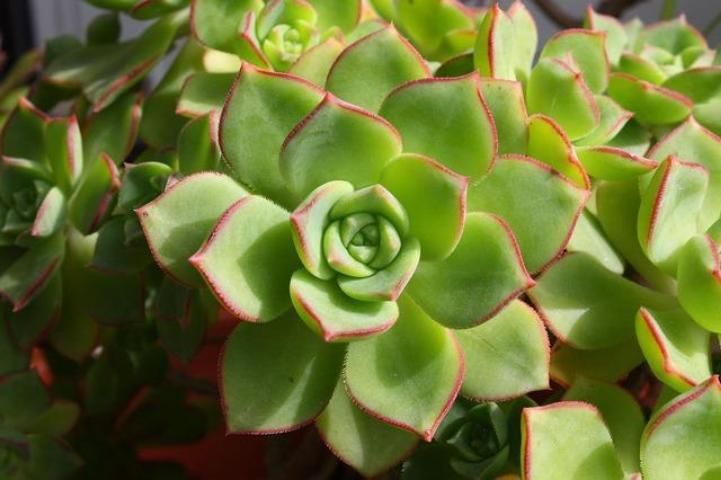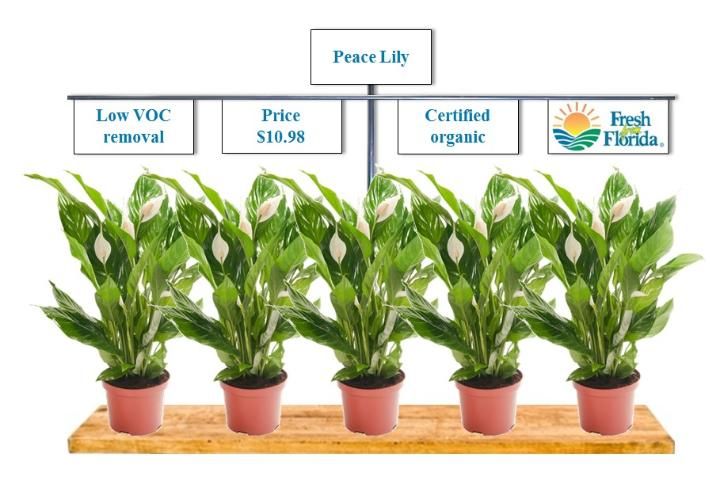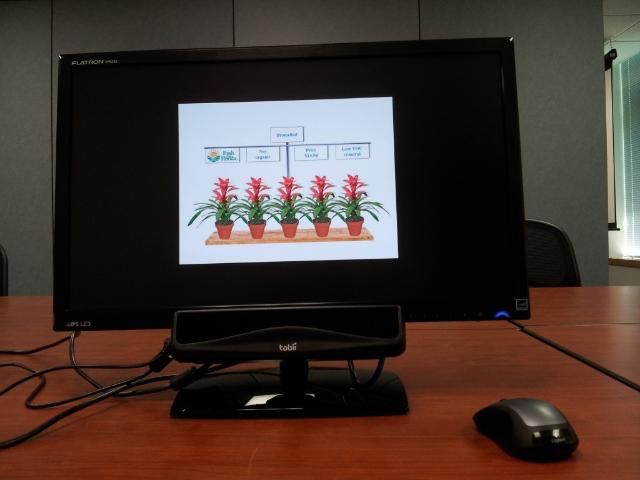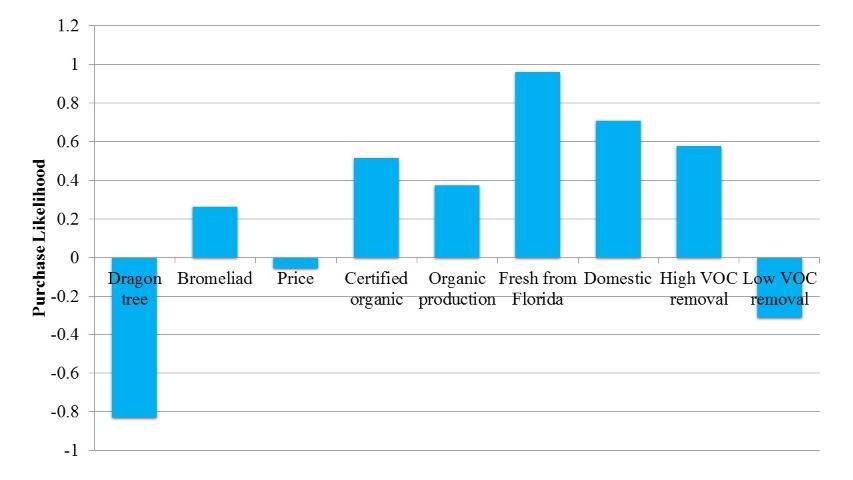Introduction
Consumer demand for indoor foliage plants is decreasing (USDA/NASS 2014). One strategy to counter decreasing demand is to align products with consumer needs. To explore this strategy, we examine purchasing barriers for indoor foliage plants in this paper. Knowing consumers' purchasing barriers is important because supply chain members (i.e., breeders, growers, suppliers, and retailers) can then develop and promote products to overcome those barriers. This paper also investigates the potential of using novel plant attributes that are not readily apparent in retail outlets (i.e., production method, origin, and volatile organic compound [VOC] removal potential) to generate consumer interest in indoor foliage plants. VOCs are air pollutants that can exude from common household products (flooring, furniture, paint) which adversely affect human health and reduce air quality (Soreanu et al. 2013; Xu et al. 2011). Understanding consumer behavior before selecting plants based on their novel attributes decreases supply chain members' risks and improves their return on investment as they produce, promote, and sell their products with those attributes.

Methodology/Summary Statistics
Data were collected by surveying Florida plant consumers in 2014. During the experiment, participants were asked to view images of indoor foliage plants and rate their likelihood of purchasing the plants on a scale of 1 to 7 (1=very unlikely; 7=very likely). In each image, plant attributes varied and were presented using in-store signage (Figure 1). Attributes included plant type, price, production method, origin, and VOC-removal capacity (Table 1). As participants determined their likelihood of purchase, their eye movements were recorded (Figure 2). After viewing the plant images, participants completed a questionnaire containing background, preference, and sociodemographic questions. Participation lasted approximately 30 minutes and participants were compensated $30 for their time.

A total of 91 people participated in the study. Participants were older, averaging 47 years old. Most were females (67%) and were in a relationship/married (64%). The average household size was 2.5 people and the average household income was between $51,000 and $60,000. Only 10% of participants had young children at home, while 67% had indoor pets.

Results
Purchasing Barriers
Forty-two percent of consumers identified maintenance requirements (e.g., watering and fertilization) as their primary purchasing barrier for indoor foliage plants (Figure 3). Price (31%), limited light (30%), and limited space (30%) were comparable in selection frequency. Twenty-six percent of consumers indicated that the fear of killing plants was a major purchasing barrier for indoor foliage plants. Potential to attract bugs was selected by 23%, followed by potential pet toxicity, family/personal allergies, and other (e.g., do not think about it, no wildlife benefit, and travel too frequently to take care of plants). The lack of plant selection, the dislike of indoor foliage plants, and potential child toxicity were selected less frequently.

Novel Indoor Foliage Plant Attributes
Plant type, production method, origin, and VOC removal influenced consumer purchase likelihood (Figure 4). Price did not impact consumer purchase likelihood for indoor foliage plants. Consumers were attracted to source labels (e.g., organic and Fresh from Florida). High VOC removal increased consumers purchasing likelihood while low VOC removal decreased purchase likelihood.

Visual Attention to Attributes
Total visit duration (TVD) was used to measure consumers' visual attention to indoor foliage plant attributes. TVD is the amount of time (in seconds) consumers spend looking at the attributes. Visual attention to the plant images impacted consumers' purchasing likelihood for indoor foliage plants (Figure 5). For example, visual attention to certified and non-cetified organic production increased consumers' purchasing likelihood while conventional production had a negative influence. Visual attention to place of origin also influenced consumers' purchase likelihood. Visual attention to price and high VOC removal did not influence consumers' purchasing decisions.
![Figure 5 Figure 5. How consumers' visual attention (total visit duration [in seconds]) affects their purchasing decisions for indoor foliage plants (Note: A higher value indicates increased purchase likelihood while a lower value indicates a decreased purchase likelihood. All attributes significantly impacted purchase likelihood (p-value<0.05), except price, high VOC removal, and low VOC removal.)](/image/FE994/12240763/11465130/11465130-2048.webp)
Recommendations to the Industry
Industry professionals can take several steps to reduce purchasing barriers for consumers. First, they can focus on low-maintenance plants in their breeding and promotional efforts. Additionally, they can promote and sell products that reduce the plants' maintenance requirements (self-watering containers, slow release fertilizers). Educational promotions can be used to increase consumer awareness of these low-maintenance options. Furthermore, since limited light and limited space are barriers to purchase, industry professionals can develop compact, low-light alternatives. These attributes need to be promoted so that consumers are aware of their benefits when making purchasing decisions. To counter the price barrier, smaller plants may be a viable option of giving consumers the same product but at a reduced cost.
Retailers should select plants for a positive purchasing experience for consumers. This can be accomplished by trying to pair consumers with plants that best meet their needs and lifestyles (e.g., promote plants that are hardy and difficult to kill). If consumers have a positive experience, they are more likely to make repeat purchases.
Promotions can be used to educate consumers about which plants rarely attract insects, are pet-friendly, and are hypoallergenic. Since many consumers have indoor pets, there is potential to develop a pet-friendly line of plants targeting indoor pet owners.
The study results also indicate that there are production-related attributes that can be used to increase consumer interest in indoor foliage plants provided the cost implications are economically feasible for the production and retail firms. For instance, there is potential to promote indoor foliage plants that are grown in-state or domestically. The economic and community benefits of purchasing these products need to be highlighted in promotions.
VOC-removal capacity is another attribute of interest to consumers. If the plant has high VOC-removal capacity (>50%) that benefit should be promoted to the consumer through advertising that informs consumers about what VOCs are (i.e., indoor air pollutants), how plants remove VOCs, and which plants are most effective at removing VOCs.
Determining the feasibility of producing plants using organic methods (either certified or implementing some organic production practices) should also be explored. If sustainable activities are used to grow the plants, they need to be promoted since these attributes are desired by end-consumers.
References
Soreanu, G., M. Dixon, and A. Darlington. 2013. "Botanical biofiltration of indoor gaseous pollutants: A mini-review." Chemical Engineering Journal 229:585–594.
USDA/NASS. 2014. Floriculture Crops 2013 Summary. Washington, DC: USDA/NASS.
Xu, Z., L. Wang, and H. Hou. 2011. "Formaldehyde removal by ptted plant0soil systems." Journal of Hazardous Materials 192:314–318.